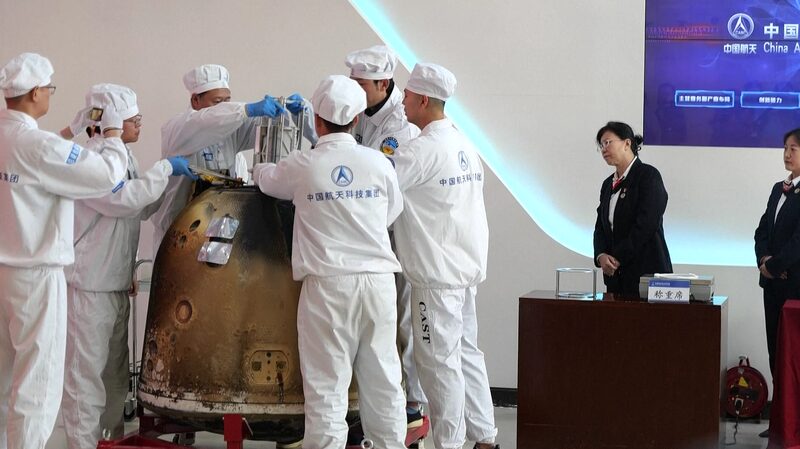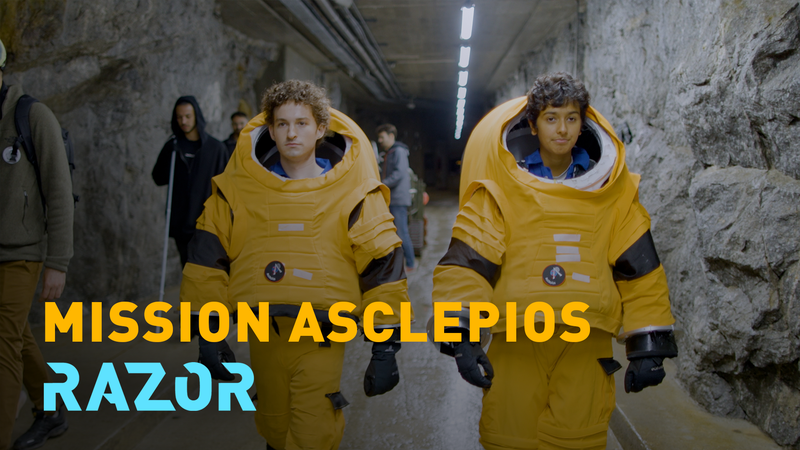Unveiling the Moon's Dark Side: Chinese Scientists Gear Up for Chang'e-6 Discoveries 🚀🌕
Chinese scientists are buzzing with excitement as they prepare to delve into the mysteries of the moon's far side, thanks to the Chang'e-6 mission's groundbreaking collection of lunar samples. This marks the first time in history that samples have been retrieved from the moon's elusive far side, opening a new chapter in space exploration.
Yang Wei, a researcher at the Institute of Geology and Geophysics of the Chinese Academy of Sciences (CAS), highlighted the mission's significance: \"The Chang'e-6 mission represents a significant milestone in the history of human lunar exploration, and it will contribute to a more comprehensive understanding of lunar evolution.\"
The global scientific community is tuning in, and the anticipation is real. Li Xianhua, an academician at the CAS, noted the unprecedented international interest: \"We have never conducted a detailed study of the South Pole–Aitken Basin before… Scientists have numerous theoretical speculations, but need analysis of the samples to test these hypotheses.\"
First-Ever Samples from the Far Side 🌑
Collecting samples from the far side of the moon isn't just a cool achievement—it's a game-changer! The far side, often called the \"dark side\" (not because it's dark, but because it's mysterious 😉), holds secrets that could unlock answers about the moon's origins and evolution.
The Chang'e-6 probe landed in the Apollo Basin within the colossal South Pole–Aitken Basin, a massive impact crater formed over 4.3 billion years ago. Imagine a crater 2,500 kilometers wide—that's like the distance from Beijing to Hainan Province! Studying materials from this area might even give us clues about the lunar lower crust or upper mantle.
Why This Matters 🌟
Understanding the differences between the near side and the far side of the moon is one of astronomy's greatest puzzles. Remote sensing has shown that they're like two different worlds in terms of crust thickness, volcanic activity, and composition.
Lin Yangting from the CAS Institute of Geology and Geophysics shared, \"Through the analysis and research of the Chang'e-6 samples, we could have a comprehensive understanding of the moon, filling many gaps in our knowledge and addressing significant scientific questions.\"
What's Next? 🚀
Chinese scientists aren't wasting any time. Teams are already assembling, seminars are packed, and the enthusiasm is off the charts. They'll be tackling big questions like:
- The origin of lunar asymmetry
- The composition of the moon's deep crust or mantle
- The volcanic history of the lunar far side
- The water content on the moon
- Potentially discovering new minerals or rocks!
This mission doesn't just impact China; it's a global affair. With previous lunar samples from the Chang'e-5 mission being shared internationally, the openness of China's lunar exploration is setting the stage for collaborative breakthroughs.
Stay Tuned! 🎧
As the world waits for the findings from the Chang'e-6 samples, one thing's for sure: we're on the cusp of some moon-sized discoveries! So keep your eyes on the skies and get ready to be amazed.
Reference(s):
Unraveling Chang'e-6: Chinese scientists eager to study lunar samples
cgtn.com




